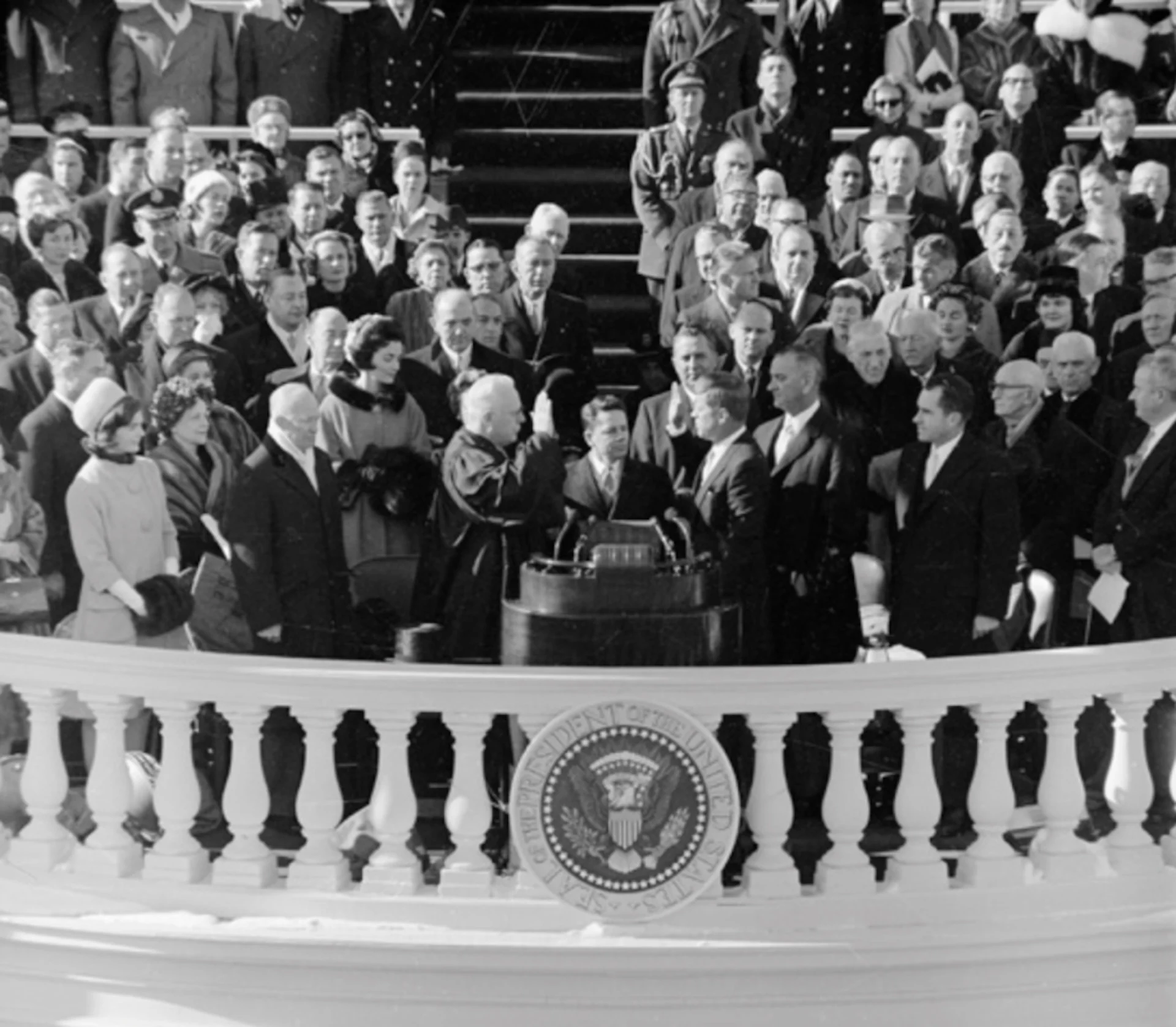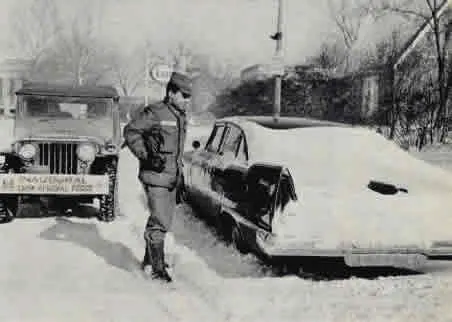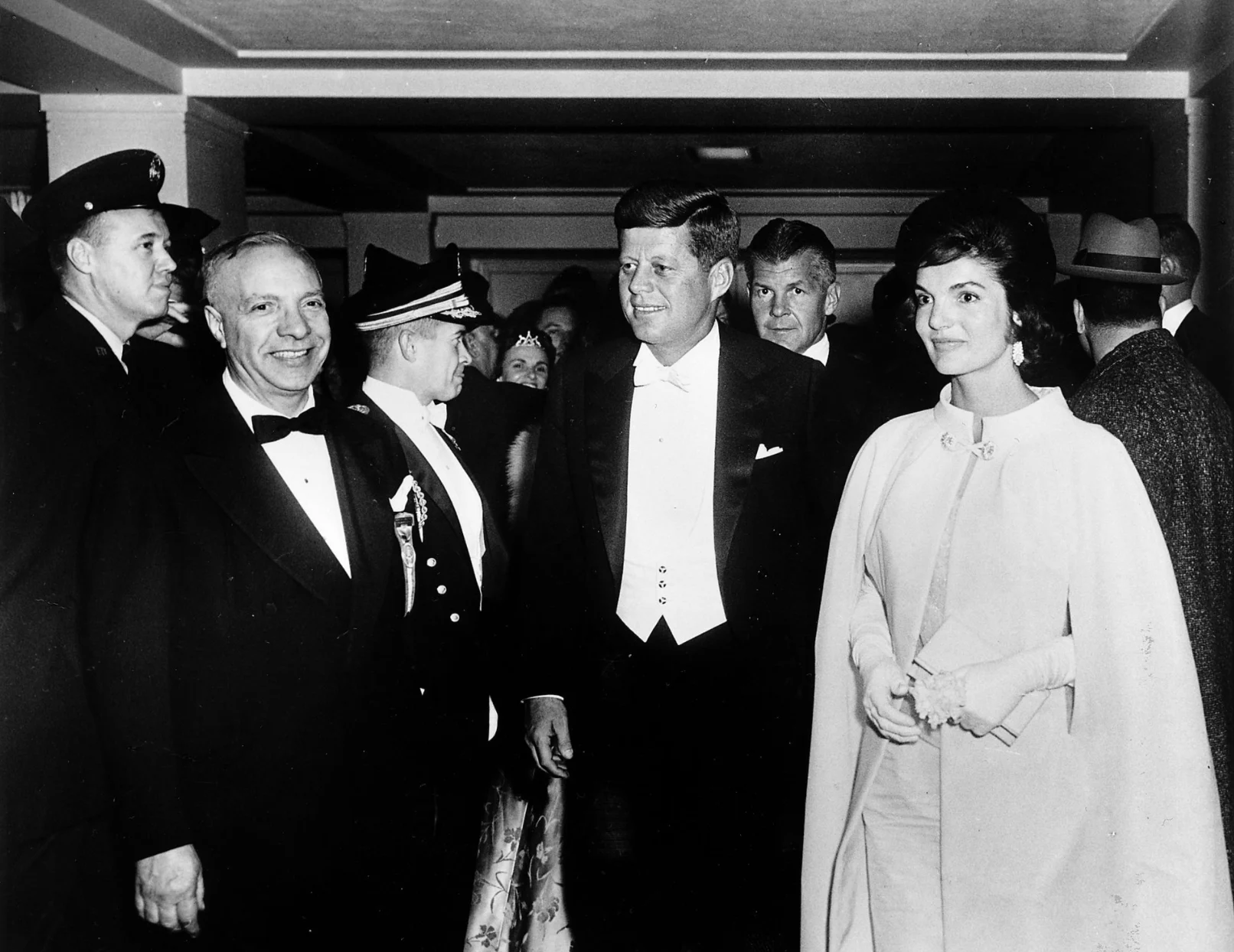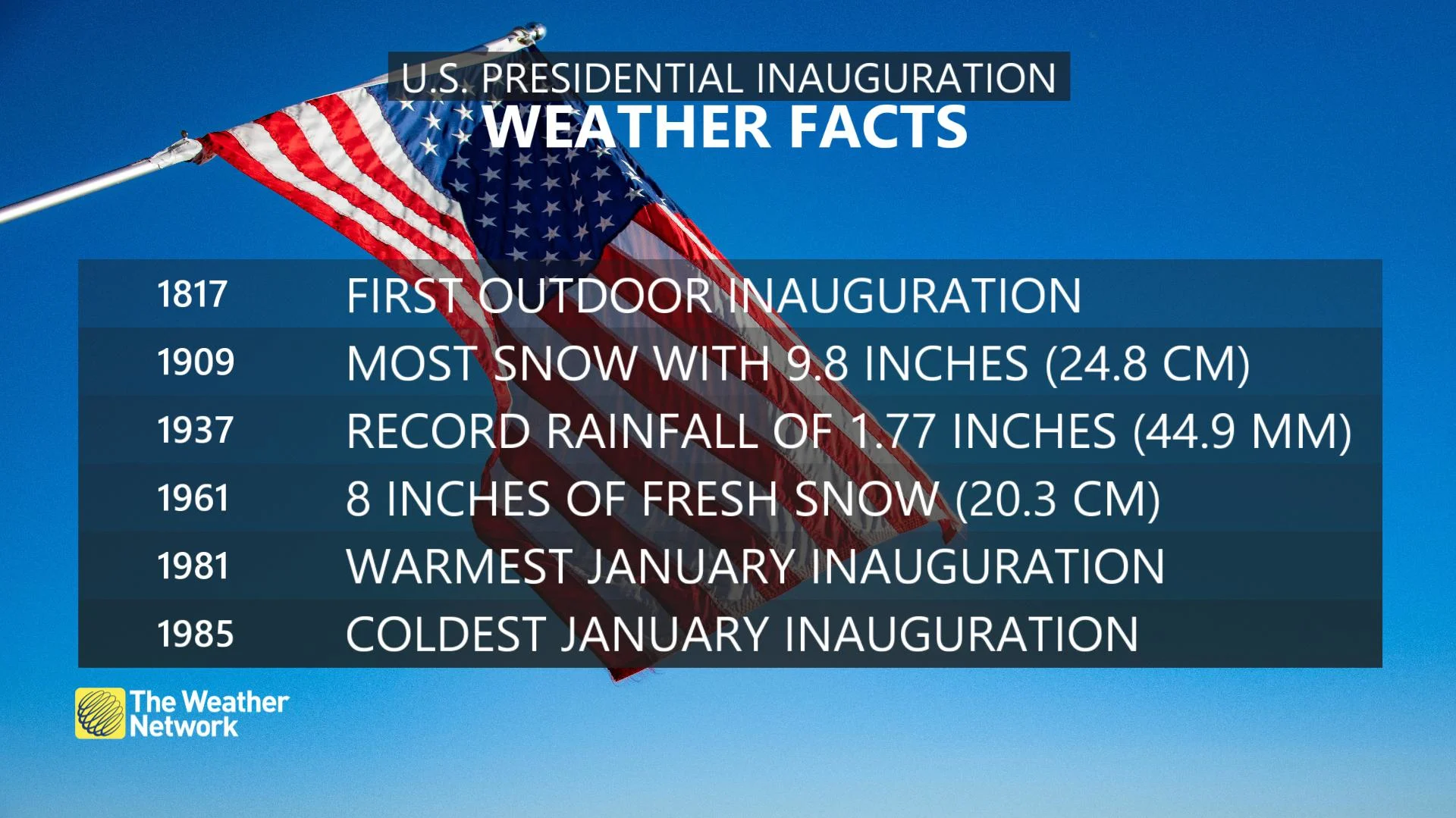
How weather impacted U.S. presidential inaugurations, namely the Kennedy storm
This Day In Weather History is a daily podcast by Chris Mei from The Weather Network, featuring stories about people, communities and events and how weather impacted them.
--
The January 1961 nor'easter is also known as the Kennedy Inaugural Snowstorm. The winter storm impacted Mid-Atlantic and New England, and ended up dropping eight inches of snow on the eve of John F. Kennedy's presidential inauguration. Kennedy's inauguration took place on Jan. 20, 1961, despite the numerous complications associated with the nor'easter.
It's a debate whether to dive into the complications of the ceremony first or to head right to the pre-inaugural ball, as they are both interesting. Let's start with the logistical inconveniences and then get into the historical gala.

View of the Capitol where the inauguration was held. President Kennedy is delivering his inaugural address, with Vice-President Johnson. Courtesy of Wikipedia
Inauguration day ended up being sunny. However, the temperatures remained low enough to preserve the accumulation of snow. The inaugural parade was almost cancelled due to the conditions.
The U.S. Army Corps of Engineers led the task of clearing snow from the streets with more than 1,000 District of Columbia employees and 1,700 Boy Scouts. The task force used hundreds of dump trucks, plows, rotaries, and even flamethrowers to clear the snow.
Over 1,400 cars were stranded due to the weather conditions. They were removed from the parade route along Pennsylvania Avenue.

A soldier from U.S. Army Corps of Engineer's Inaugural Snow Removal Force preparing to move a car abandoned. Image courtesy U.S. Army Corps of Engineers. Courtesy of: U.S. Army Corps of Engineers
Former President Herbert Hoover tried to attend the inauguration, but the storm caused poor visibility at Washington National Airport and prevented Hoover from flying.
Despite the cold temperatures, a large crowd still turned up for the inauguration ceremony and parade. At noon, the temperature was only -5.5°C and felt almost like -14 with the wind chill. Though this temperature didn't set any records, the average high on Jan. 20 in Washington is 6°C.
So, the show went on. And it was quite the show.
The events actually started while the nor'easter was snowing and blowing. Frank Sinatra and Peter Lawford organized the pre-inaugural ball.
The ball is still considered to be one of the biggest parties ever held in Washington, D.C.

President John F. Kennedy and First Lady Jacqueline Kennedy arriving at Sinatra's inaugural ball. Courtesy of Wikipedia
Sinatra recruited Hollywood stars to attend the event. He even convinced Broadway theatres to cancel their performances for the evening so the actors who were starring in the shows could attend the gala.
The stars that performed and spoke at the event included Fredric March, Sidney Poitier, Nat King Cole, Ella Fitzgerald, Gene Kelly, Tony Curtis, Janet Leigh, Bill Dana, Milton Berle, Jimmy Durante, and Harry Belafonte.
Kennedy's swearing-in ceremony ended up working out, but weather complications have caused more severe impacts on other presidential inaugurations.

In 1841, President William Henry Harrison was sworn into office during a cold and blustery day. After a long speech, he ended up catching a cold, which developed into pneumonia. He died a month later.
It was a similar situation in 1853 when President Franklin Pierce was sworn in. This time it was the first lady, Abigail Fillmore, who caught a cold. The cold also developed into pneumonia and she died shortly after.
In 1937, it poured during President Franklin Delano Roosevelt's second inauguration. This is the first time the event was held on Jan. 20. The freezing rain and sleet prevented some crowds from making it to the event. Throughout the day, Roosevelt rode in an open car with half an inch of water on the floor.
In 1985, President Ronald Reagan's second swearing-in needed to be moved indoors. The parade was also cancelled. The temperature at noon was only -13.8°C, with the wind chill making it feel in the -23 to -28.8 range.
The weather has played a factor in U.S. presidential elections since 1817 when the event was first held outdoors.
To hear more about the Kennedy Inaugural Snowstorm, listen to today's episode of "This Day In Weather History."
Subscribe to 'This Day in Weather History': Apple Podcasts | Amazon Alexa | Google Assistant | Spotify | Google Podcasts | iHeartRadio | Overcast'
Thumbnail courtesy of Wikipedia





